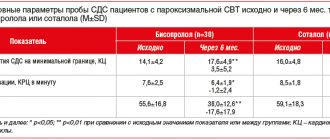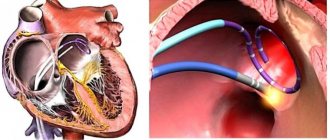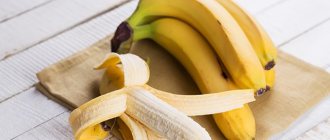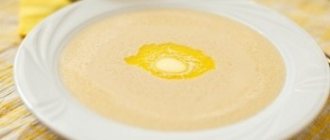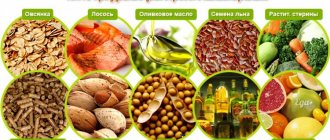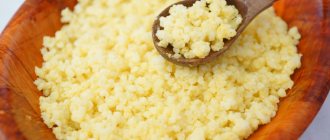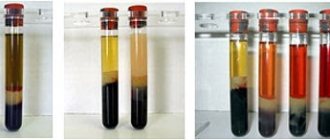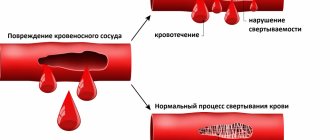General rules. Duration of the diet.
Nutrition for diabetes is the most important component of treatment. In mild forms of diabetes, sometimes diet alone is enough to achieve the target blood glucose level. In more severe cases, drug therapy (oral hypoglycemic agents, insulin) comes to the rescue.
General rules of diet for diabetes:
- Meals should be frequent and fractional (5-6 times a day), in small portions. This will help avoid large jumps in glycemic levels.
- Meals should be taken at the same hours. The same applies to taking glucose-lowering medications and insulin injections.
- Strict diets and hunger strikes are prohibited
- Preferred cooking methods include stewing, boiling, steaming and baking.
- Easily digestible carbohydrates (sugar, honey, confectionery, jam, baked goods, white flour) should be excluded from food.
- Food should contain a large amount of fiber, since such carbohydrates are digested more slowly and do not increase blood sugar so sharply.
- Limit the consumption of animal fats (butter, lard, fatty meats).
- It is desirable that the caloric intake of food and the amount of carbohydrates be approximately the same on different days; this is especially important when selecting the dose of insulin.
Prohibited and permitted products
The menu should include:
- vegetable and mushroom soups or cooked in low-fat meat broth;
- cereal porridges (buckwheat, barley, pearl barley, oatmeal);
- boiled fish;
- lean meat;
- seafood;
- mushrooms;
- vegetables (cabbage, zucchini, pumpkin, eggplant, cucumbers);
- boiled (preferably in the skin) and baked potatoes;
- legumes;
- greens (lettuce, spinach);
- soft-boiled eggs and omelet;
- fermented milk products (sour cream, cottage cheese, cheese);
- sour fruits (lemons, grapefruits, plums, apples);
- bran and grain bread;
- bakery products made from wholemeal flour;
- some juices, coffee, black, green and herbal tea (rosehip, dandelion, nettle).
You can eat no more than 200 grams of potatoes, and no more than 8-9 tablespoons of porridge and pasta.
The following should be excluded from the diet:
- pork fat;
- fatty fish and meats;
- sausages and smoked meats;
- pates;
- fast foods, semi-finished products;
- ketchup, mayonnaise;
- French fries and potato croquettes;
- salty and spicy foods;
- semolina and rice porridge;
- grapes and raisins;
- flour products (dumplings, dumplings, pies, pancakes);
- baked goods and sweets;
- honey and jam;
- condensed milk;
- chocolate, sweets;
- sweet fruits and berries (bananas, pears, apricots, etc.);
- nuts and dried fruits;
- sweet and alcoholic drinks;
- White bread.
A strict diet must be followed for type 2 diabetes. It is important to consider the calorie content of foods. It should not exceed 1700 kilocalories per day.
With type 1 diabetes, you can eat almost anything, but take into account the permissible number of bread units.
Comments from nutritionists. Pros and cons of the diet.
Following a diet and nutrition regimen for diabetes mellitus allows you to avoid an unwanted rise in blood sugar levels.
“The right choice of a sanatorium is a significant step towards maintaining and increasing health. “Gorny” is a resort complex that combines the experience and knowledge of Russian and Soviet balneology. The presence of modern medical equipment and innovative installations, the professionalism of the staff and love for their work will serve as the key to extending longevity,” - the head physician of the sanatorium, Alexander Olegovich Karaulov.
The right foods for diabetics
Now let's talk about those foods that should be included in the diet in large quantities, as well as those that are better to forget about.
To determine foods that are beneficial and harmful for diabetics, nutritionists and endocrinologists have introduced a universal indicator - the hyperglycemic GI index. Pure sugar, the hyperglycemic index of which is 100 units, was recognized as the reference product.
The safest and healthiest foods for diabetics have a GI value not exceeding 50 units:
- milk and dairy products - GI 35–40;
- lean meat and fish - GI 10–20;
- tomatoes, cucumbers, cabbage, lettuce, etc. - GI 5–15;
- nuts - GI 15;
- lentils and beans - GI 30–40, etc.
A low hyperglycemic index is not a guide to consuming these foods in unlimited quantities, but in general they will not harm a patient with diabetes, but, on the contrary, will help maintain normal blood sugar levels.
You should also consider “harmful goodies”:
- alcoholic drinks - GI above 85;
- chocolate - GI 70;
- sugar beet - GI 65;
- potatoes - GI 65;
- white bread - GI 90;
- corn flakes - GI 85, etc.
A high GI does not mean that foods that are “bad” in carbohydrate content should be completely and forever abandoned. You just need to consume them rarely and in strictly limited quantities so as not to provoke exacerbation of diabetes.
Low-carb diet menu for diabetes for 7 days
It’s easier to stick to proper nutrition if you create a menu for the week in advance. To do this, the patient can independently calculate the calorie content of dishes or seek help from a nutritionist. With a low-calorie diet, the total number of calories per day is 1200 - 1500.
A low-carb diet menu should be planned in advance to help control calories.
Sample seven-day menu
1st day:
- morning – pearl barley porridge, cheese, black bread;
- snack - a glass of kefir;
- day – tomato and cucumber salad, green borscht, steamed fish cutlet, rye bread;
- lunch – green apple, rose hip decoction;
- evening – baked fish, side dish of stewed cabbage, black tea;
- 2 hours before bedtime – a glass of skim milk.
Day 2:
- morning – buckwheat porridge, vegetable salad, steamed cottage cheese casserole, coffee;
- snack – a glass of juice, cookies;
- day – soup with mushrooms and zucchini, boiled chicken breast, vegetable salad;
- lunch – a glass of fruit jelly;
- evening – omelet, boiled chicken liver, green tea without sugar;
- 2 hours before bedtime – a glass of milk with a low percentage of fat.
3rd day:
- morning - cabbage rolls with chicken and rice, low-fat sour cream, rye bread;
- snack – crackers, fresh orange juice;
- day – salad with vegetables and seafood, pea soup, pasta, green tea;
- lunch – apple, compote;
- evening - cottage cheese soufflé, fresh berries, tea or coffee without sugar;
- 2 hours before bedtime – a glass of low-fat kefir.
4th day:
- morning – pearl barley porridge, cheese, black bread;
- snack - a glass of kefir;
- day – tomato and cucumber salad, green borscht, steamed fish cutlet, rye bread;
- lunch – green apple, rose hip decoction;
- evening – baked fish, side dish of stewed cabbage, black tea;
- 2 hours before bedtime – a glass of skim milk.
Day 5:
- morning - steam omelette, fruit slices from oranges, grapefruits, apple juice;
- snack – a sandwich of rye bread and cheese, unsweetened black tea;
- day - cabbage and cucumber salad, low-fat sour cream, boiled chicken breast, rye bread, coffee;
- lunch – fruit jelly, dried fruit compote;
- evening – baked zucchini with cheese and mushrooms, green tea;
- 2 hours before bedtime – a glass of kefir.
Day 6:
- morning – steamed salmon, rice porridge, coffee;
- snack – cottage cheese with berries;
- day – cabbage soup, beetroot salad with olive oil (150 g), herbal tea;
- lunch - salted crackers, compote;
- evening – boiled rabbit fillet with vegetables, rye bread, orange juice;
- 2 hours before bedtime – a glass of fruit jelly.
Day 7:
- morning - boiled eggs, oatmeal with milk, apple compote;
- snack – apple, tea or coffee without sugar;
- day – steamed beef or turkey chop, buckwheat porridge;
- lunch - a glass of milk;
- evening – pollock fillet with vegetables, seafood salad;
- 2 hours before bedtime – a glass of low-fat fermented baked milk.
The above is just a sample menu. The dietary table can be adjusted depending on the patient’s tastes and personal tolerance to certain foods.
Diabetics benefit from eating fish and lean meats.
Important! You should switch to proper nutrition gradually, since a sudden change in diet often causes stress for the body.
Nutrition for patients with type 1 diabetes
For patients with type 1 diabetes, the main part of the daily menu should consist of complex carbohydrates (200–250 g per day). Since carbohydrates are the source of energy, they are replaced with proteins. You don’t need to completely eliminate fats from your diet, but you shouldn’t abuse them either. The menu should include no more than 10–15% fat. Be sure to include vitamins and minerals. Eating low-carbohydrate foods and replacing them with proteins helps prevent high blood sugar and reduce insulin doses.
Diet tips for type 1 diabetes:
- Food should be taken in small portions, no more than 6 times a day. It is not recommended to eat before bedtime or overeat during the day;
- with increasing physical activity, an increase in the amount of carbohydrates is allowed;
- You should not eat smoked, salted, spicy, fried foods, marinades, or spices;
- it is important to completely give up alcohol;
- fish, meat, vegetables should be steamed or stewed. These foods should not be fried.
Such nutrition will help prevent complications of diabetes, if necessary, reduce weight, increase immunity and normalize the patient’s overall well-being.
Recipes
A low-carbohydrate diet for type 1 diabetes excludes cereals, pasta, any bread (even rye), sugar, fruits and many other foods that people have been accustomed to eating for years. They are replaced by vegetables, meat, fish, eggs, cheese, etc. From these ingredients you can prepare excellent dishes that will provide the body with energy, vitamins, and minerals. We have selected delicious recipes for a low-carb diet for diabetics.
Brewer's goulash
- Time: 90 minutes.
- Number of servings: 6 persons.
- Calorie content of the dish: 2900 kcal (128 kcal/100 g).
Tender meat turns out very tasty, tender and aromatic. The recipe for patients with type 1 diabetes has been slightly modified - the original version also contains wheat flour and red bell pepper . In any case, when eating a dish for the first time, a patient with diabetes should test their sugar level, since there are “borderline” products among the ingredients. You should not have onions or gravy in the finished dish.
Ingredients:
- beef – 1 kg;
- lard – 100 g;
- onions – 2 pcs.;
- garlic – 6 cloves;
- red hot pepper – 1 pc.;
- tomato paste – 5-6 tbsp. l.;
- cumin – 1 tsp;
- dark beer – 1 l.
Cooking method:
- Cut the beef into cubes, press the garlic through a press and mix with the meat.
- Cut the lard into strips and fry in a drop of vegetable oil.
- Cut the onion into half rings and add to the lard. Add cumin and simmer until onion is soft.
- Add tomato paste, stir and simmer for another 1 minute.
- Add meat and garlic to the ingredients, pour beer over the ingredients.
- Salt the dish, cover the frying pan or cauldron with a lid, and simmer over low heat until the meat is cooked.
Fish fillet in cheese soufflé
- Time: 40 minutes.
- Number of servings: 4 persons.
- Calorie content of the dish: 1930 kcal (144 kcal/100 g).
Tender fish in a cloud of cheese and egg soufflé melts in your mouth. The best part is that the dish does not contain a single gram of harmful sugar, which is extremely important for patients with type 1 diabetes. Even a beginner can handle the preparation. Having tried fish in this interpretation once, you will want to repeat it again and again. Suitable for this dish are halibut, flounder, sea bass, and pangasius fillets.
Ingredients:
- fish fillet – 4 pcs.;
- hard cheese – 75 g;
- chicken egg – 5 pcs.;
- butter – 2 tbsp. l.;
- salt – 1.5 tsp;
- allspice - to taste.
Cooking method:
- Roll the fillet into tubes, tie it with threads and fry in butter until half cooked.
- Sprinkle the fish with salt and pepper and remove the threads.
- Place one fish roll at a time in buttered muffin tins.
- Grind the cheese on a coarse grater and grind with the yolks.
- Beat the whites until stiff peaks form.
- Mix the cheese, yolks and whites, and immediately pour into the molds with the fish.
- You need to bake the dish in the oven preheated to 220°. Time – 15 minutes. A sign of readiness is the splendor of the soufflé and the fried top crust.
Pate for diabetics
- Time: 35 minutes.
- Number of servings: 8 persons.
- Calorie content of the dish: 2090 kcal (140 kcal/100 g).
How would a person with type 1 diabetes want to treat themselves to dishes that healthy people eat! The presented pate recipe will help make this desire real. You shouldn’t spread it on bread, but you can eat it with stewed vegetables or an omelet. After eating pate, you definitely need to track your glycemia, because the dish contains onions.
Ingredients:
- chicken liver – 300 g;
- chicken fillet (double) – 1 pc.;
- cream 15% – 500 ml;
- onions – 2 pcs.;
- garlic – 2 cloves;
- vegetable oil – 2 tbsp. l.;
- Provencal herbs, salt - to taste.
Cooking method:
- Boil the liver and chicken breast until cooked.
- Chop the onion into small pieces and fry until golden.
- Pour cream into the onion, add spices, salt, and boil the sauce a little. Add chopped garlic.
- Combine chicken, liver and sauce in a blender. The pate is ready.
Genetic prerequisites for carbohydrate metabolism disorders
Individual risk of increased blood glucose and insulin resistance can be determined using gene markers that affect carbohydrate metabolism. Normally, insulin reduces glucose levels, but when the cells' sensitivity to this hormone is impaired, insulin resistance develops. Its extreme manifestation is type 2 diabetes mellitus.
The main genetic contribution to the development of type 1 diabetes mellitus comes from the genes of the HLA system; the insulin gene region on 11q, 11p15, 6q and a region on chromosome 18 have a significant association with this disease.
The development of diabetes mellitus of the second type, which, unlike the disease of the first type, is considered not congenital, but acquired, is influenced by the level of consumption of foods with a high glycemic index. In addition, studies have shown that the shared HLA haplotype of members of a family with type 1 diabetes affects the likelihood of developing type 2 diabetes in the rest of its members.
Patients who have a high level of genetic risk for developing type 2 diabetes should make efforts to limit their diet of foods rich in carbohydrates. They may be recommended a low-carbohydrate diet. It allows you to better control body weight and prevent the occurrence of type 2 diabetes.
In order to determine the risk of carbohydrate metabolism disorders and find out whether a person has a tendency to insulin resistance, medical geneticists suggest taking a genetic study “Carbohydrate metabolism” in the nutrigenetics test section and a study on the risk of developing type 2 diabetes mellitus.
Menu
Everyone makes up their own diet individually, and it is advisable to show it to a progressive endocrinologist. The portion size is selected independently. A low-carbohydrate diet for diabetics involves adjusting insulin doses - this is a very important point! If the patient does not understand the specifics of taking insulin well, Bernstein's nutritional system will not be fully effective. Sample menu for 3 days:
| Breakfast | Dinner | Dinner | Snack options | |
| 1 | Boiled eggs, coffee with cream | Mushroom broth with beef, stewed cauliflower | Baked pollock, cucumber and herb salad | Pork pork, baked meat, permitted nuts, sunflower seeds, eggs, sliced fish |
| 2 | Baked chicken breast, fresh vegetable and herb salad, tea | Borscht for diabetics, tofu | Steamed pork and beef cutlets, baked zucchini with spices and mozzarella | |
| 3 | Seafood, coffee | Vegetable broth, meatballs without rice, hard cheese | Chicken fillet with mushrooms, stewed in yogurt sauce, cabbage salad |
Principles of nutrition
A low-carbohydrate diet for diabetics is selected individually, depending on the type of disease and the characteristics of the patient’s body. The general principles of nutrition include the following recommendations:
- reduction in portions. Food should be taken 5-6 times throughout the day, preferably at the same time. The daily diet should include calories. For people leading an active lifestyle - from 1500 to 3000 calories, for patients leading a sedentary lifestyle - 1200 - 1500 calories;
- the basis of the diet should be proteins;
- Sugar should be avoided and sweet fruits are prohibited. Diabetics are recommended to replace them with sweeteners, but not more than 30 g throughout the day;
- fast carbohydrates should be replaced with slow ones;
- The main meal should be breakfast and lunch. For dinner you can eat no more than 20% of all daily calories;
- It is important to drink enough water.
A low-calorie diet prohibits the consumption of large amounts of light carbohydrates
When drawing up a diet menu, the patient should figure out which foods increase sugar in the body and after what period of time this occurs. This will help you find out how long before taking certain foods you should inject short-acting insulin.
Food options
The low-carbohydrate diet for diabetics and Table No. 9 have a common basis for selecting products for the menu. The food basket is identical in quality. The difference lies in the amount of nutrients (BJU or fats, proteins, carbohydrates). In both cases, the same products are prohibited for consumption. Simple carbohydrates that are prohibited are:
- cakes, pastries, baking their butter, shortbread, puff pastry;
- candies, chocolate (milk and white);
- marshmallows, Turkish delight, marshmallows;
- ice cream, condensed milk;
- bottled tea, sweet soda, packaged juices;
- fruits: bananas, pineapples, dates, figs, grapes.
When it comes to vegetables, there are some differences in diets. With a low-calorie diet, beets, potatoes, and carrots are excluded. Table No. 9 does not prohibit these products, but strictly limits their quantity in the weekly diet. The main selection parameter is the GI (glycemic index) of the finished dish or product. This value represents the rate of food processing, the release of glucose from it and the resorption of the latter into the blood.
The lower the GI, the safer the product is for a patient with diabetes. The average glycemic index suggests limited consumption of such foods. High GI foods are prohibited. Digital indexing is as follows: low - from 0 to 30, medium - from 30 to 70, high - from 70.
Foods that diabetics should avoid
| Meat and meat products | Fatty pork, poultry (duck, goose), sausages (sausages, frankfurters, sausages), semi-finished meat products (chebureks, khinkali, dumplings), smoked deli meats, stewed meats and pates |
| Fish, fish products | Canned, salted, dried, smoked fish |
| Dairy | Full-fat cottage cheese, cheese, curd mass with additives, glazed cheese curds, sweet curd cream, sour cream and cream with a fat content of more than 10% |
| Vegetable and fruit and berry preserves | Pickled and salted vegetables (except for sauerkraut), fruits in syrup, jams, preserves |
| Cereals | White rice, sago, semolina, (couscous – limited) |
| Other categories | Fast food, fatty mayonnaise-based sauces, mustard, ketchups (all varieties) |
Any diet does not allow the use of snacks, chips, popcorn, or flavored crackers as a snack. In accordance with the listed products, the menu should not contain the following dishes: rich fatty broths and first courses prepared on their basis, milk soup with rice, smoked fish, meat, lard, pea (bean) soup with smoked meats, butter pies with sweet filling , French fries, hamburgers, cheeseburgers, etc.
With any diet, dishes prepared by the culinary method of frying are excluded from the diet. Another common feature of the two food systems is the rules for eating:
- You cannot be greedy, that is, overeat. Neither the quality of the food nor its quantity should be abused. The energy value of a one-day diet varies between 1200-1500 for a low-carbohydrate diet, 2000 for a diabetic diet according to Pevzner.
- Replace animal fats with vegetable fats. Eliminate trace fats completely.
- Follow the diet (the permissible time interval between meals is 3–4 hours). Fasting leads to a rapid decrease in blood glucose, which can result in severe hypoglycemia (even to a coma).
- Do not violate the drinking regime (approximate volume of liquid is two liters per day).
A prerequisite is permanent monitoring of glycemic indicators before and after meals
For an objective analysis of the results of the diet, it is recommended to keep a “Diary of a Diabetic”. When sugar drops extremely low, the carbohydrate component of the menu needs to be revised. A set of the right foods for a low-carbohydrate and standard diet is discussed in the table.
| Squirrels | Animals | Turkey and chicken (skinless), rabbit, fish, crab, squid, shrimp, eggs, veal (lean beef) |
| Vegetable | Nuts, mushrooms (dry, fresh) | |
| Fats | Saturated | Cow butter (limited) |
| Unsaturated | Oils: flaxseed, olive, corn, sesame | |
| Polysaccharides | Cereals | Oats, wheat, barley (barley and pearl barley), buckwheat |
| Legumes | Green and regular beans, chickpeas, beans (soy), peas, lentils |
The percentage of nutrients that is recommended to be followed:
- with a diet with limited carbohydrates BZHU = 50%, 30%, 20%
- with the diabetic ninth diet BZHU = 25%, 30%, 45%.
The fruit and vegetable component of a diabetic's menu is determined by the glycemic index. Permitted products in this category are presented in the table. To ensure that daily food intake does not cause difficulties, it is recommended to develop a diet for a week. If you can’t create a menu yourself, you can seek help from a medical specialist.
results
- The researchers identified 23 studies with 1,357 participants.
- The analysis showed that at 6 months, compared with the control group, patients on the low-carbohydrate diet group were more likely to achieve remission of diabetes: 57% compared with 31% (risk difference, 0.32, 95% CI 0.17-0.47; 8 studies , n=264, I2=58%).
- Subgroup analysis showed that diabetes remission with a low-carbohydrate diet was markedly reduced in studies that included patients on insulin therapy.
- At 12 months, data on remission rates were less significant, or the effect of the diet was low or there was an increased risk of diabetes.
- There was clinically significant improvement in weight loss, triglyceride levels, and insulin sensitivity by month 6, which tapered off by month 12.
- The very low carb diet was shown to be less effective than the low carb diet for weight loss at 6 months. However, the effect was explained by adherence to the diet.
- But with high adherence to a very low-carbohydrate diet, clinically significant weight loss was detected, compared with low adherence to such a diet.
- There were no significant differences between the groups in terms of quality of life at 6 months. At the same time, at 12 months the quality of life decreased, as did the LDL-C level.
Low Carb Diet Recipes
There are a lot of low-carb recipes in cooking. Such food will help a person with diabetes feel full, get the necessary vitamins, but at the same time not harm their health.
Pike perch baked with vegetables
To prepare the dish, you need to take pike perch fillet, add salt, pour olive oil, and leave for 20 minutes. After the fish has been marinated, place it in the oven at 180 degrees for 20 minutes. After this, cut the onions, tomatoes, carrots, zucchini into small cubes, place them near the fish, and put them back in the oven for half an hour. Finally, pour low-fat cream over the fish.
